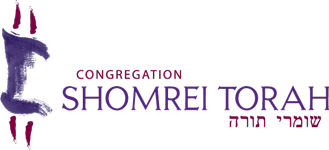Compiled by Bert Wagner
All societies determine a specific age that separates childhood from adulthood—the age when an individual assumes his or her religious and communal responsibilities to the society in which he or she lives. Like most traditions, the ceremonies connected with becoming a bar or bat mitzvah at age thirteen evolved over time. It has always been viewed as one moment in the process of spiritual growth and commitment to the Jewish people.
The establishment of becoming a bar mitzvah at thirteen years plus one day for boys and a bat mitzvah at twelve years plus one day for girls has several origins. The Talmud records that during the time of the Second Temple (520 b.c.e.–70 c.e.), it was traditional for Sages to bless a child who had completed his first fast day at the age of twelve or thirteen. In Pirkei Avot (“Ethics of the Fathers,” second century c.e.) it is
written, “At thirteen one is ready to do mitzvot.” By the time the Talmud was completed in the sixth century c.e., boys of thirteen years plus one day had assumed full responsibility for performing the mitzvot, hence the term bar mitzvah, “son of the commandment.” This also had legal ramifications: These boys were now counted in a minyan and could act as witnesses. There was no formal rite, only a public blessing by the father that he was no longer responsible for the sins of the son.
The earliest bar mitzvah service consisted of blessing and reading the last section of the weekly portion of the Torah, the maftir, meaning the extra reading, since the boy was not a bar mitzvah until after the service, and reading the haftarah portion. The most
important part of the rite was a d’rashah or d’var Torah, a sermonette on the
Torah or haftarah portion. Since the bar mitzvah was assuming adult religious responsibilities, he was expected to show his understanding of those responsibilities to his family and, more importantly, to the community. Structurally, the bar mitzvah service is essentially the same as it originally was. It wasn’t until the seventeenth and eighteenth centuries that we find records of a bar mitzvah being invited to lead part of the worship service.
A public service in celebration of a girl becoming a bat mitzvah, “daughter of the commandment,” did not come into formal being in North America until 1922. Dr. Judith Kaplan-Eisenstein, the daughter of Rabbi Mordecai Kaplan, the founder of Reconstructionist Judaism, blessed and read the Torah portion from a book “at a respectable distance” from the Torah scroll. The regular celebration of girls becoming b’not mitzvah came into prominence in Reform congregations particularly in the second half of the 20th century and is generally identical in form to the celebration of a bar mitzvah.
It should be noted that the rite of confirmation originated in the Reform Movement in Germany in 1810 and included girls in 1817. Since it was felt that a thirteen-year-old was too young to understand the precepts of Judaism, the celebration of a boy becoming a bar mitzvah was dropped in favor of confirmation, which was held at age sixteen or seventeen because that was deemed a more mature age to assume the responsibilities of Judaism. Today, most congregations hold both ceremonies.
Historically, all joyous occasions were celebrated in some manner, and becoming a Bar/Bat mitzvah was no exception. However, unlike weddings at which we are commanded to rejoice with bride and groom, the bar mitzvah has no such mandate. In early years the celebrations varied from a simple Kiddush of wine, brandy, and
cake following the service to more elaborate meals for the family and friends. The Rabbis urged families not to have elaborate celebrations and always to provide for the poor in order to fulfill the mitzvah. The d’rashah was delivered by the bar mitzvah some time during the celebration in order to emphasize its religious aspects. Gifts were generally limited to books, or religious items, or “sermon gifts,” which were small amounts of money
given as thanks for the sermonette. Among Moroccan Jews, this money was given to the boy’s teacher.
Historically, Bar/Bat Mitzvah has been viewed as a first step in a young person’s acceptance of the obligations to family and community as a responsible Jew.
It was and should continue to be the beginning of a lifetime of the performance of mitzvot, study, prayer, and a commitment to share the destiny of the Jewish people.
